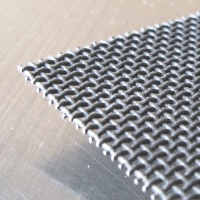OES Co., Ltd. is now uniquely positioned and evaluated by our catalytic ammonia eliminating technology in Chemical and Electronics Industries.
Handling PrecautionsCatalyst Poison

Our gaseous exhausts processing units have excellent ability of waste gas destruction and cleaning. However, there are some toxic gases for which our unit should not be applied because of insufficient destruction and cleaning of toxicity.
In case of catalytic waste gas processing units, catalyst poisons sometime damage our catalysts. It is necessary for us to confirm if there should be some catalyst poison exist and also conditions of operation are to be confirmed.
If you want to know more precisely, please contact us.
There are two types of Catalyst Poison.
Temporal poison is able to recover but permanent poison cannot be recovered. In this case, catalyst should be disposed and changed to a new catalyst.
In operating unit, when catalyst rapidly loose it’s original efficiency*, we suppose if there will be some substance toxic to catalyst. At this stage, we cannot distinguish catalyst poison being temporal or permanent.
In these cases, it is necessary to study what kinds of impurity exist in inlet gases.
Also, mist containing solid impurity, stick and cover catalyst surface, cause temporal intoxication. Analysis and consideration of above toxic substance and state, we could avoid further intoxication of catalyst.
It is important to select good catalyst unit having a mechanism of avoiding contact between catalyst poison and catalyst.
* If Outlet temperature only decreased, in spite of constant concentration of inlet gas maintained and supplied, loss of catalyst efficiency should be considered.
Loss of catalyst efficiency, occurs not only in case of catalyst intoxications, overall check has to be considered including mechanical problems.
Outline of Catalyst Poison
Permanent Intoxication
| Reason of catalyst efficiency loss | Countermeasure |
| Chemical reaction Si : silicon, Hg : mercury, Pb : lead, Sn : tin, Zn : zinc, As : arsenic, P : phosphorus, Metals such as phosphorus |
Waste disposal |
| Structural destruction by high temperature burning (600℃ over) |
Waste disposal |
| S : sulfuric compounds(50ppm over) SOX : sulfur oxide、H2S : hydrogen sulfide |
Waste disposal |
Temporary Intoxication
| Reason of catalyst efficiency loss | Countermeasure |
| Cl : chlorine、 F2 : fluorine、 I2 : iodine |
Almost recovered by burning at 500℃,24hrs |
| Fat-like substances such as tar and pitch | Burning at 600℃,24hrs In case of small amount, burning at 450℃,24hrs could be selected. However, in many case of containing heavy metal, sufficient care should be taken. |
| High polymer such as Nylon fiber | Burning at 600℃,24hrs In case of small amount, burning at 450℃,24hrs could be selected. |
Mechanical Damage
Decrease of Catalytic Reaction, due to Mechanical Damage
| Reason of catalyst efficiency loss | Countermeasure |
| Decrease of burning temperature | Mechanical check and parts exchange. |
| Odor spilling due to heat exchanger trouble |
BannerSpace
OES INC.
#503 1-6-14, Hashira,
Okazaki-Shi,Aichi
444-0837 (map)
TEL +81-564-64-5567
FAX +81-564-64-2750